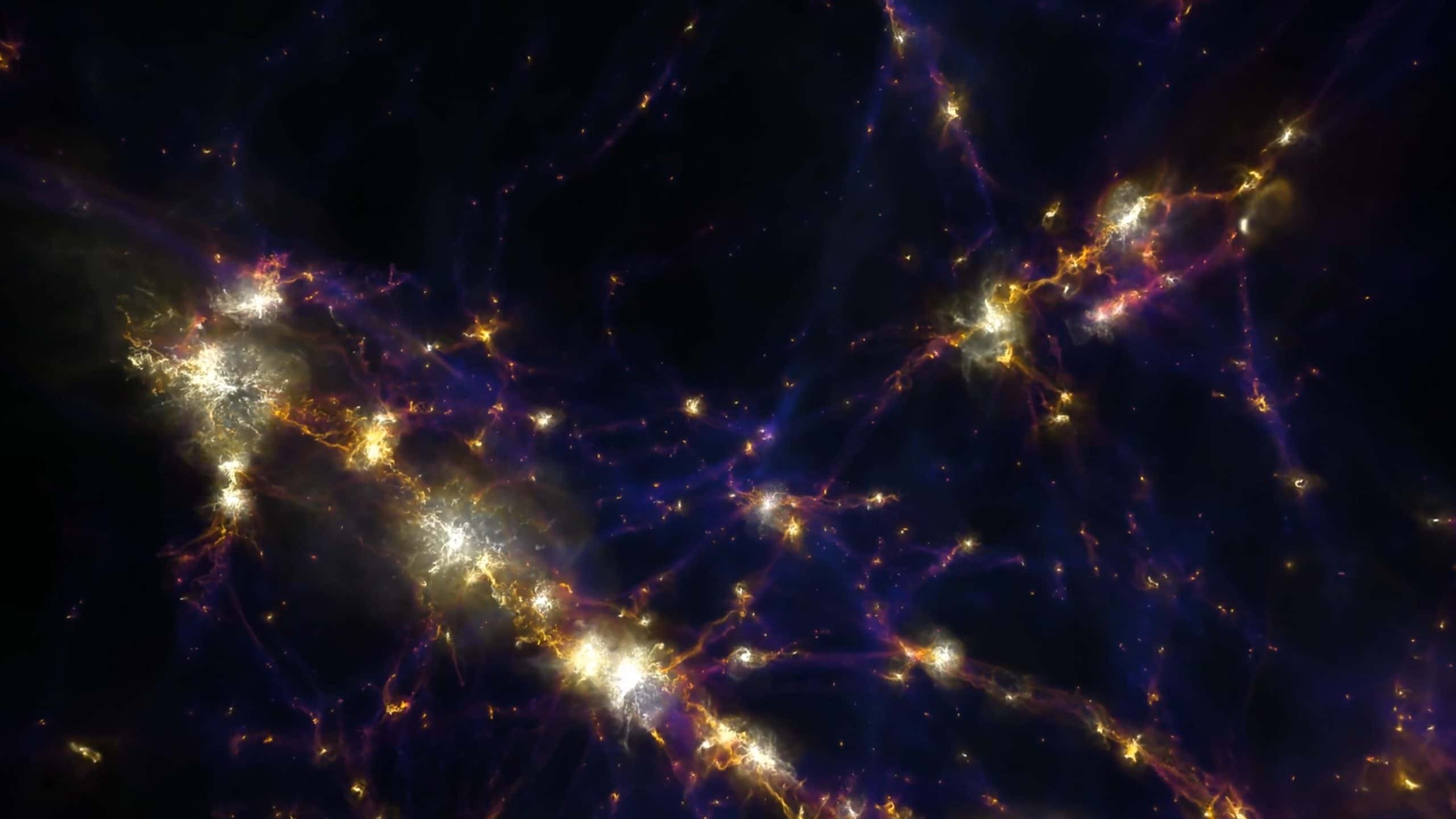The simulation, which comprehensively models the evolution of ordinary matter, dark matter, and dark energy in line with the laws of physics, offers breathtaking visualizations of galaxies and galactic clusters forming within the cosmic web.

A groundbreaking universe computer simulation, part of the FLAMINGO project, is providing fresh insights into the ongoing debate surrounding the distribution of matter in the universe
This web, comprising filaments of both baryonic and dark matter, represents the largest known structure in the universe. While dark matter has long been recognized as the dominant force of gravity, this universe computer simulation emphasizes the significant role of ordinary matter. Joop Schaye, a co-author of the FLAMINGO project, underscores the importance of considering both elements in cosmological studies.
This universe computer simulation addresses a pressing cosmological enigma known as the “S8 tension,” which revolves around disparities in how matter is distributed in the cosmos. Astronomers contend that such universe computer simulations, beyond their visual allure, serve as pivotal tools in resolving this issue. The S8 parameter, a key factor in this debate, characterizes the clumpiness of matter in the universe, offering vital insights into its structure and evolution.
The universe computer simulation’s inclusion of ordinary matter and its consideration of extreme galactic phenomena, including supermassive black holes and supernova-driven galactic winds, still falls short of explaining the observed weak clumping of matter in the present-day universe.
This leaves scientists contemplating potential shortcomings in the established models of cosmology and physics. The FLAMINGO project’s universe computer simulations, while offering tantalizing possibilities, have yet to definitively address the S8 tension. However, they remain a beacon of hope in unraveling the mysteries of the universe. As researchers delve deeper, contemplating exotic properties of dark matter and potential shifts in the theory of gravity, the quest for understanding the S8 tension continues, opening new frontiers in fundamental physics and cosmology.




